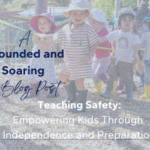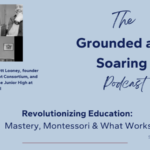Raising Them Bravely
The U.S. Department of Labor’s prediction that 65 percent of our children’s careers haven’t been invented yet seems even more relevant today: What will the world be like when our children step into it as adults?
The U.S. Department of Labor’s prediction that 65 percent of our children’s careers haven’t been invented yet seems even more relevant today: What will the world be like when our children step into it as adults?
A few years before his cancer diagnosis, we had a birthday party to celebrate Perry, my dad. I had a moment of awe and admiration for the joyful, fulfilling life he had created and reached. I raised a glass and said to him, “Here’s to you, Pop. Congratulations on making your dreams into reality.” Without missing a beat as he raised his glass to his lips, he said, “Better to make your reality your dreams.”
We’re all scientists before we’re science students. When their natural curiosity is not cultivated, though, they can lose interest in the scientific principles that allow them to see their world differently.
It’s not their fault, of course.
Storytelling is in our DNA. As human beings, we evolved to tell stories as a way to convey emotion and share information. Storytelling is how we educate and entertain. It’s how we learn about our world and find meaning in it. More than anything, storytelling is how we connect with one another.
Like many aspects of our society, education is in a time of transformation. On my mind specifically are six urgent questions about the future of schools in our society. Though the answers to each aren’t always obvious, understanding the context and specifics of the questions is an important first step for us all…
We know things in relation to other things – we know tall in comparison to short, clean in comparison to messy. So why wouldn’t we compare what our children know to some standard of what they should be learning? After all, we worry they’re falling behind or, on the flip side, take pride in their ability to achieve beyond expectations. Comparison to a standard makes almost unimpugnable sense.
When I saw this New Yorker cover several years ago I could not take my eyes off of it. As we live through our society’s digital-technological revolution, it symbolized, in playful yet somewhat dystopic imagery, the heart of a concern I was feeling—and still do to some degree.
Cosmic Education inspires a rigorous academic pursuit of understanding. It’s not flimsy. It’s made of ore and stone, of science and art.
This summer my younger sister and I took a beach walk. Even though we live only a few hours away from each other, we’d not seen each other in person in more than a year. During the walk she said, “…it just feels like the world is spinning off of its axis.”
We are living through this disquieting time together. Should we expose ourselves all day to the 24-hour news cycle, then panic and paralysis will likely be our bedfellows. How can we stay current, while also role modeling for our children an energized and growth-mindset approach to these challenging times? How can we grow our children’s resilience, and our own?


